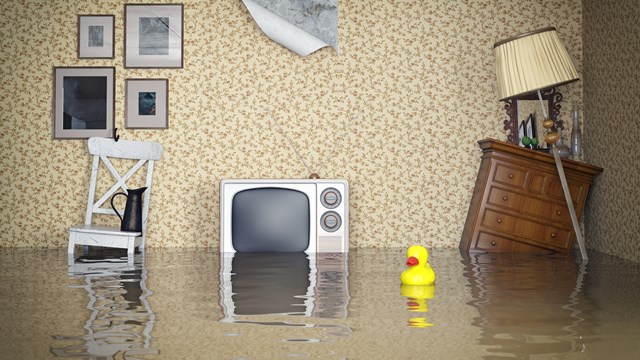Unlike individual apartment owners’ insurance coverage, most co-op and condo buildings’ insurance policies are pretty standard—they include homeowners’ insurance, liability, and umbrella coverage. Usually, the common areas such as the hallways, roofs, basements and so on are insured for liability and physical damage, and occasionally, the building’s insurance policy also covers the standard fixtures in each individual unit.
Just because most buildings have similar policies covering the basics doesn’t mean that’s all there is to be had in the way of coverage, however. There’s directors’ and officers’, or “D&O” insurance, which protects board members if they are sued in connection with their actions or decisions on behalf of the building. And nowadays, more and more boards and associations—not just lenders—require that the shareholders or condo owners carry their own homeowners’ insurance to protect their individual units.
Other types of insurance for co-ops and condo units can include coverage for sewer backups, natural disasters, employee thefts and even changes in municipal rules and regulations. Those are just a few of the more specialized types of insurance available that non-insurance professionals—including board members and managers—may not be familiar with. This article will take a look at some of these types of insurance.
Time to Go Green
To begin with, in today’s world of both residential and commercial buildings, “green” is the new byword (in the past, such buildings were merely called “energy-efficient.”) Insurance underwriters are jumping aboard the trend and offering several types of “green” coverage to multifamily buildings.
One, says Tim Earhart, vice president of Chubb Group of Insurance Companies, entails replacing a green building that has been destroyed by fire or other catastrophe with another green building—or replacing damaged portions of the building with equivalent environmentally advanced features. The second type pays to replace a damaged “regular” building with a green building, or upgrade a destroyed building’s green status (for example, from LEED Silver to LEED Gold) after a disaster.
In the first case, among other things, the loss payment provisions should include the cost of complying with green building ordinances or laws, and the policy should cover such items as solar panels, geothermal systems, wind turbines and rainwater storage. Chubb also can reimburse policyholders for a cost of hiring a LEED-accredited professional to help in the redesign and reconstruction of the building.
Replacing an older building with a green one, or damaged portions of an older building with green installations, can be covered by special insurance as well. However, there may be limitations with offering upgrade coverage for buildings whose electrical and mechanical systems are considered obsolete, that have building management issues, and for those that are landmarks or are located in landmark districts.
Eileen Clinton, vice president of risk management for Brown & Brown in Syracuse, says green insurance usually entails “taking a traditional property form and adding enhancements, by a broker who understands what green is all about. In a nutshell, it’s a property program.”
For example, she says, “If you provide on-site renewable energy and [the building] has a panel that causes it to go out, the policy enhancement would provide for the development’s connection to the utility grid for a period of time” while repairs are conducted.
Two companies in particular are aiming for that niche. Fireman’s Fund Insurance Company (a division of Allianz) and Lexington Insurance Company (a division of AIG) are among the first companies today to address that segment of the market they most clearly control: replacement from a loss. In a limited roll-out with hopes of being nationwide by the end of the year, the policy allows for the rebuilding of a building to higher environmental standards after a partial or total loss. Fireman’s Fund will pay to upgrade the building to LEED-certified status by hiring a LEED-certified professional, as well as upgrading building materials and systems, such as upgrading to Energy Star appliances, roofing, plumbing and heating and cooling systems.
Lexington’s program provides many of the same features, but uses Energy Star and Green Seal as its benchmarking tool. By committing to upgrading the building these insurers recognize the importance of green building to the environment and to the risk-assessment and value of the property.
By the way, not all that is green is necessarily good. According to Joe Ross of Century Coverage Corporation in Valley Stream, “What is being discussed in insurance circles is that ‘going green’ in a building might cause an increased environmental hazard due to the accumulation or sudden release of gasses within or outside the property because of the tight seal created by a green roof.”
Building Equipment
Another area of specialized insurance that boards might take a look at is that of separate policies for major pieces of building equipment, whether this includes a boiler, HVAC system or other types of machinery, such as the motors used in swimming-pool pumps. All kinds of malfunctions can afflict these items, from explosions in boilers, engines or piping to a breakdown in a building’s central air conditioning system.
The traditional term for the type of a policy covering physical plant elements was “B&M,” or boiler and machinery insurance. However this is a misnomer—these policies can cover any type of equipment, from HVAC systems to electrical control panels to security systems. In fact, such contracts today are often known as equipment breakdown contracts.
Nowadays, says Ross, a separate B&M policy can be written for a property, but these items can also be included in a typical property policy for a condo or co-op development.
Clinton adds that while HVAC is included in a regular property policy, separate policies for boilers are still written because as pressurized vessels, boilers are more potentially dangerous than other building equipment.
Here Comes the Flood
In a coastal area such as ours—and especially in the age of global warming—flood coverage is another important type of insurance to consider. Given New York City’s proximity to large bodies of water makes it ever more conceivable that New York could be flooded or suffer damage from a severe hurricane.
Many readers will doubtless remember the controversy that ensued in 2006 when Allstate decided that Downstate New York was a catastrophe-prone area and announced it would not write new policies for single-family homes here. The city’s Office of Emergency Management (OEM) publishes a “hurricane evacuation map” online, and among the areas it shows as being most vulnerable to hurricanes and floods are Coney Island, Far Rockaway, the Staten Island coastline, JFK Airport, Randall’s Island, and even some parts of Lower Manhattan. (Much of which was, after all, created from landfill.)
Hurricanes and floods, says Ross, are each dealt with somewhat differently in the eyes of insurers. Water damage resulting from hurricanes, he says, would be covered by most basic property damages under the category of “windstorm”—even though the water itself may be what causes the damage. Some policies may exclude coverage for hurricanes of more than a specific strength, requiring buildings to pay a stiff premium for additional coverage.
On the other hand, says Ross, the term “flood” insurance parlance refers to damages caused by the “rising of navigable waters.” In the New York area, he says, most carriers issue a limit of $1 or $2 million, with more coverage being prohibitively expensive. That being said, “I recommend the purchase of whatever flood coverage the carrier offers,” he says. Often, flood coverage is bundled with earthquake coverage in what the industry calls “flake” (flood and quake).
According to some professionals, flood insurance can also include the backup of sewers and drains, which we touched on earlier, or even water overflowing a basement. Anyone who has struggled against the tide of mold and mildew in a recently flooded basement can immediately see why it is so important.
And although flood insurance can be purchased through your local insurance professional, the underwriting itself is provided by the National Flood Insurance Program, an arm of the Office of Emergency Management. The program dates from the late 1960s, and was founded to provide homeowners a more affordable alternative to expensive disaster insurance. Before the NFIP was founded, insurance coverage for flood losses was not provided by any private insurance carriers
One problem may ensue when condo or co-op boards (and/or their lenders) require not just the building itself, but each individual unit owner to carry flood coverage. F. Michael Conte, a partner at Honig Conte Porrino Insurance Agency and a member of the Professional Insurance Agents of New York New York City’s advisory council, says one of the most frustrating things “is trying to explain this to an owner on the 25th floor.”
Other Types of Insurance
Finally, there are other types of specialty insurance that boards may want to know about.
One area of concern for the future, says Conte, is that of Internet privacy claims. “Today, more buildings are becoming web-based; this opens the door to privacy issues as well as suits being brought for libel due to posted comments that may or not be true.”
Clinton also mentions liability for personal information that prospective buyers may give on their applications, such as Social Security numbers, that could then be sabotaged. “A lot of people don’t realize how prevalent that is,” she says.
Also, she says, “Pollution liability for mold and other issues is the a number-one cause of litigation in condos. When there is water intrusion, many [board members or managers] don’t know how to clean it up, and don’t do it the right way. Then they sue the condo owner and everybody else.”
The list of supplementary and specialty insurance options doesn’t end there. In addition to D&O, which we mentioned earlier, Michael Schraer, also with Chubb, lists a few more:
Alternative key system and lost key coverage
Garage keepers’ legal liability
Ordinance and law coverage and increased replacement cost for older buildings
Builders’ risk insurance for construction projects and renovations
Communicable disease expenses, if a public health authority determines that a communicable disease incident has occurred at one of your buildings (In the age of swine flu, this may be less fantastic than it sounds.)
Realty tax assessment, which reimburses the value of increased taxes resulting from construction repair or rebuilding.
The Last Word
There are obviously many types of insurance out there—some of which might be of inestimable value to your co-op or condo, some of which might be redundant, or entirely unnecessary, depending on your risks and exposures. The best way to decide what your building needs is to confer with a trusted insurance professional—and that, combined with a proactive, committed board/ management team, is the best insurance policy of all.
Raanan Geberer is a freelance writer, reporter, and editor living in New York City.







Leave a Comment